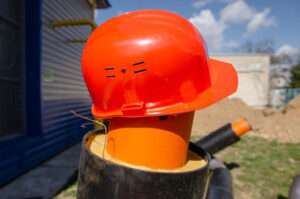Emergency Restoration – How to Qualify a Contractor and Document Damage
When disaster strikes, it can be devastating for your home or office. Knowing who to call is important, especially when you need emergency restoration services. They will assess the damage and restore the damaged area. Read on to learn more about emergency restoration. This article includes information on how to qualify a contractor and the equipment used. It will also cover how to document damage so that you can file an insurance claim.
Costs of emergency restoration vary greatly depending on the scope of the damage. A board-up service can cost up to $70 an hour, plus materials. The cost is higher when the service is required immediately, but the insurance will often cover the costs. A proactive maintenance program will also reduce costs associated with shipping time.
When the need for emergency restoration arises, it’s essential to choose a qualified contractor. Whether it’s a flooded basement or a broken window, insurance companies will require a certain standard of work before they’ll cover a claim. This means you should check references and read reviews before choosing a contractor.
The Municipal Excess Liability Joint Insurance Fund (MEJIF) has developed guidelines that qualify emergency restoration service vendors in each county. This process is fair and transparent and aligned with relevant best practices recommended by the Office of State Comptroller. The contractor’s work must be complete and completed to standards that are acceptable to the state and federal government.
Disaster restoration requires extensive training, certifications, and experience. Qualified contractors will also have the appropriate tools and protective equipment to properly perform the job. In addition to the proper safety equipment, they also know what risks and precautions must be taken to protect people and property. Disaster restoration is an extremely risky task, so it’s important to use qualified contractors to ensure the safety of yourself and your family.
The Department of Facilities Management is currently looking for qualified contractors to perform disaster restoration services. The department plans to execute a contract with the best-qualified contractor. Additionally, the county encourages the formation of teams to determine which contractor can provide the most value for money. After reviewing the proposals, they’ll select the contractor that best fits their needs and fits their budget. When selecting a contractor, you should consider their experience, expertise, and cost.
The equipment used in emergency restoration is critical to the process of recovering from a large disaster. The recovery crews use specialized shop vacs to remove harmful chemicals and moisture from affected areas. Strong shop vacs can pull moisture out of carpets and hardwood floors. Some companies also have truck-mounted vacuums to remove large volumes of moisture.
The equipment used in emergency restoration varies according to the type of damage. Mold and fire restoration require specialized air movers and dehumidifiers, and water damage requires flood extractor machines and optional accessories. The specialized equipment used in water damage restoration is not as expensive as some tools, but it’s important to have the right tools for the job.
While water damage is one of the main factors in disaster restoration, other factors can make a disaster restoration project a profitable one. For example, the proper equipment can prevent mold and mildew from forming, preventing the need for costly repairs. The right tools can also help the restoration process by providing the fastest solution possible.
Air movers are also an essential part of the restoration process. They move moist air in the desired direction and speed up the drying process. Several units of air movers can be installed in a single area, which will greatly expedite the water damage restoration process. They are portable, lightweight, and easy to move around.
During an emergency restoration, the most important thing to do is document the damage thoroughly. The more information you provide to your insurance company, the more likely they will be to process the payout quickly. Make sure to create an inventory list of the contents of your home and take pictures of all damaged items. This will help your insurance company know exactly what you have and how much it’s worth.
